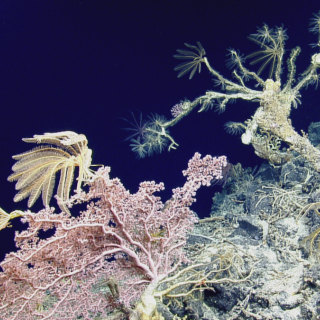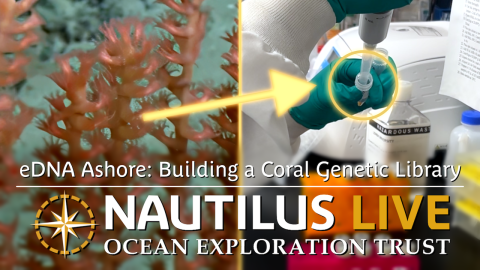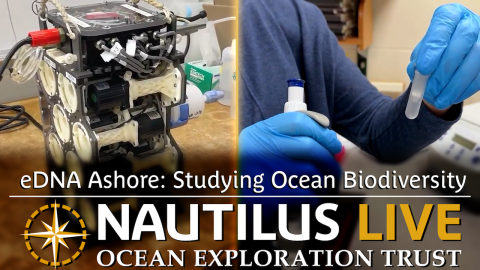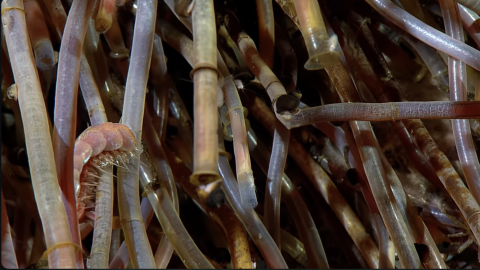Anemone Engulfs Isopod
Ever wonder what anemones eat? In this highlight video from ROV Hercules’ exploration of Nafanua Cone on Vailuluʻu Seamount, we watched in real-time as an anemone made a meal of a nearby isopod. Both pink critters were living on the slopes of this active underwater volcano within the National Marine Sanctuary of American Samoa. Sea anemones are predators that use their tentacles covered with stinger cells (cnidocytes) containing barbs to catch prey like zooplankton, fish, worms, marine larvae, mussels, and (unfortunately for this crustacean) isopods. Witnessing predation events in the deep sea rarely happens but provides important data to better understand seafloor food chains.
Vailulu'u is an important exploration site for our NA165 E Mamana Ou Gataifale II expedition as all dives help learn about the biology, geology, and chemistry of deep volcanic habitats.
The E Mamana Ou Gataifale II expedition (NA165) is led by Ocean Exploration Trust and funded by NOAA Ocean Exploration, NOAA Office of Marine and Aviation Operations Uncrewed Systems Operations Center, and the Bureau of Ocean Energy Management via the Ocean Exploration Cooperative Institute in partnership with the National Marine Sanctuary of American Samoa and with support from Woods Hole Oceanographic Institution and Air/Sea Heritage Foundation.

E Mamana Ou Gataifale II - American Samoa
American Samoa is the southernmost U.S. territory, centered in the South Pacific, 2,300 miles southwest of Hawaiʻi, and 1,500 miles northeast of New Zealand. It is home to the cradle of Polynesia’s oldest culture.



